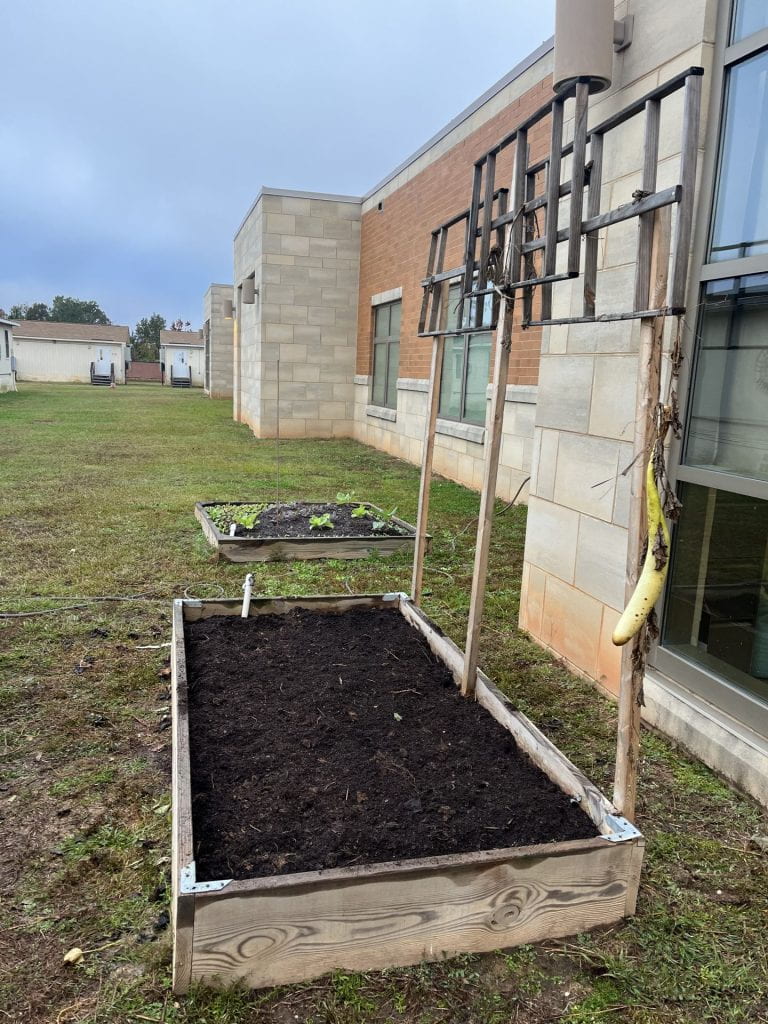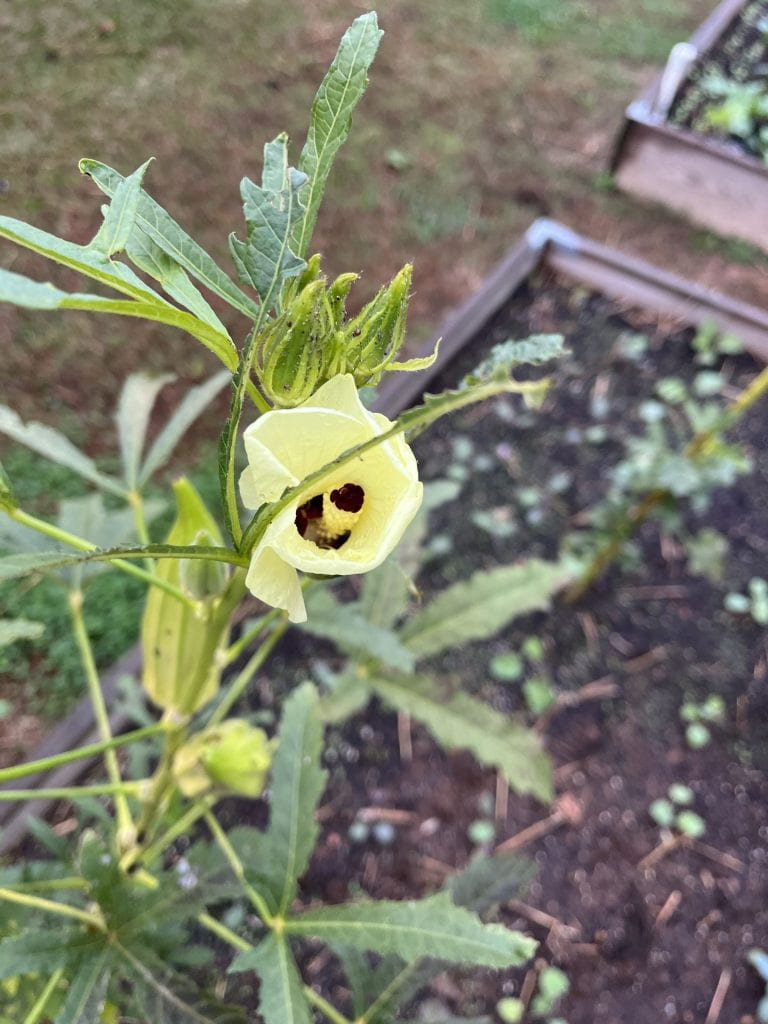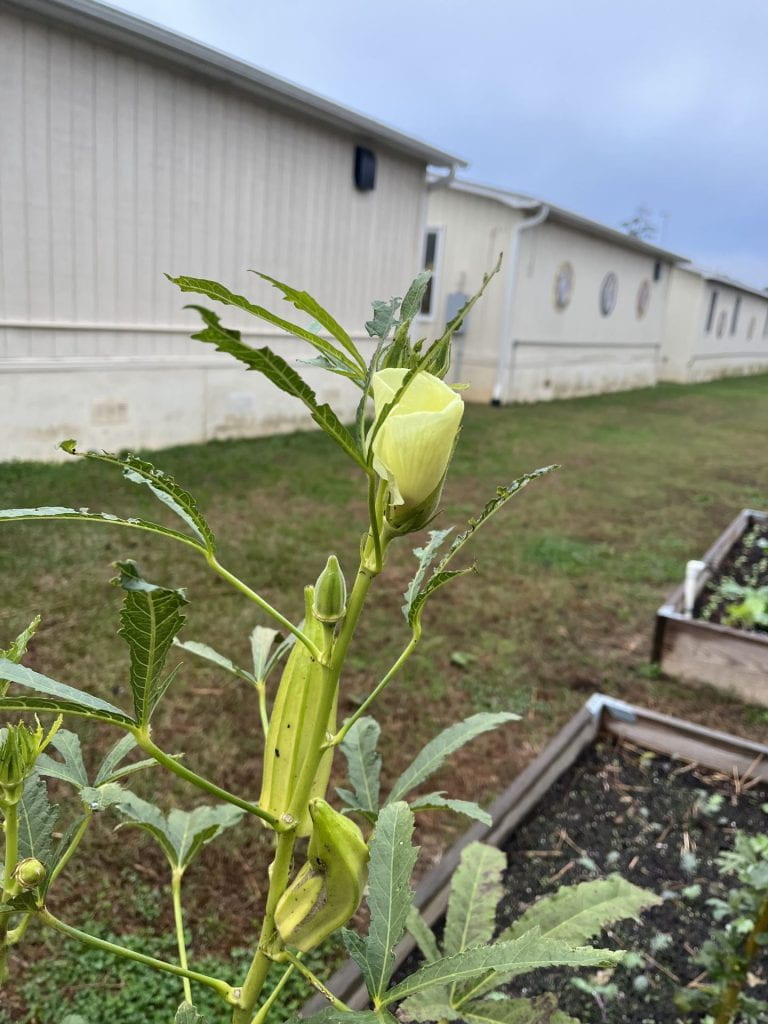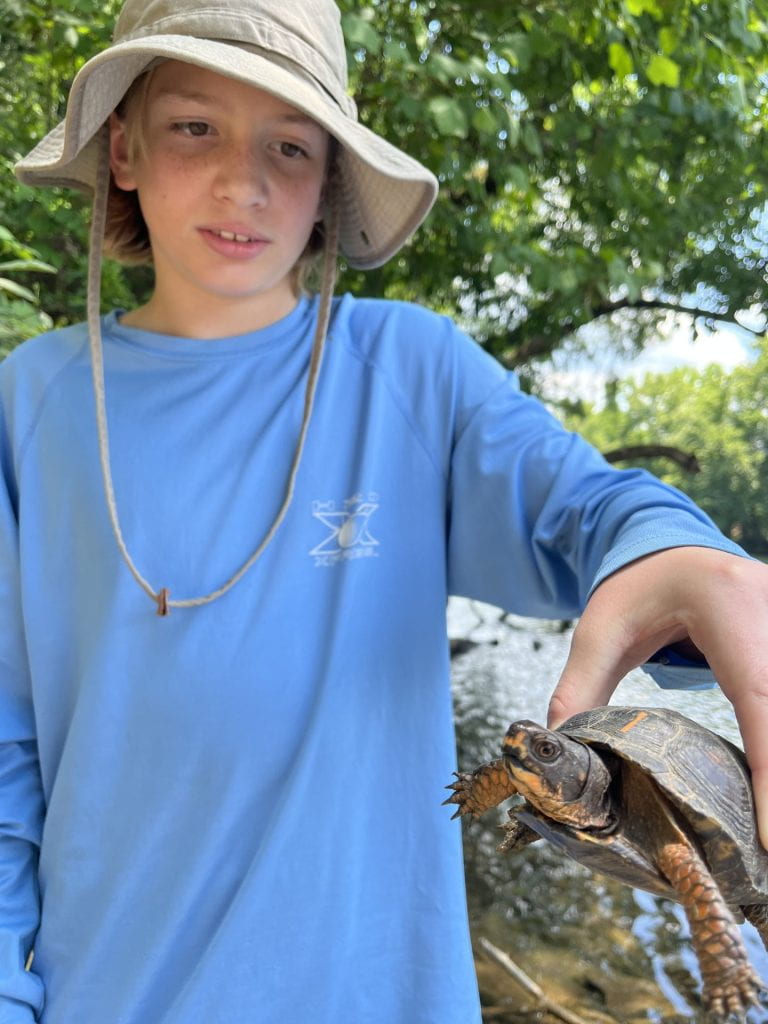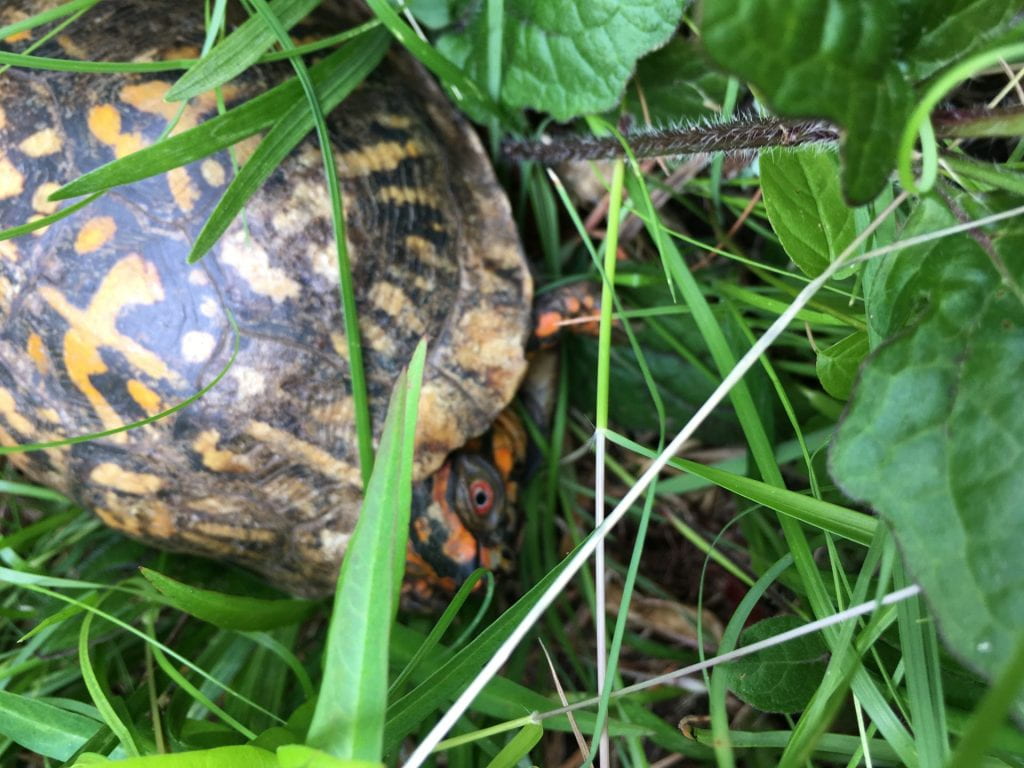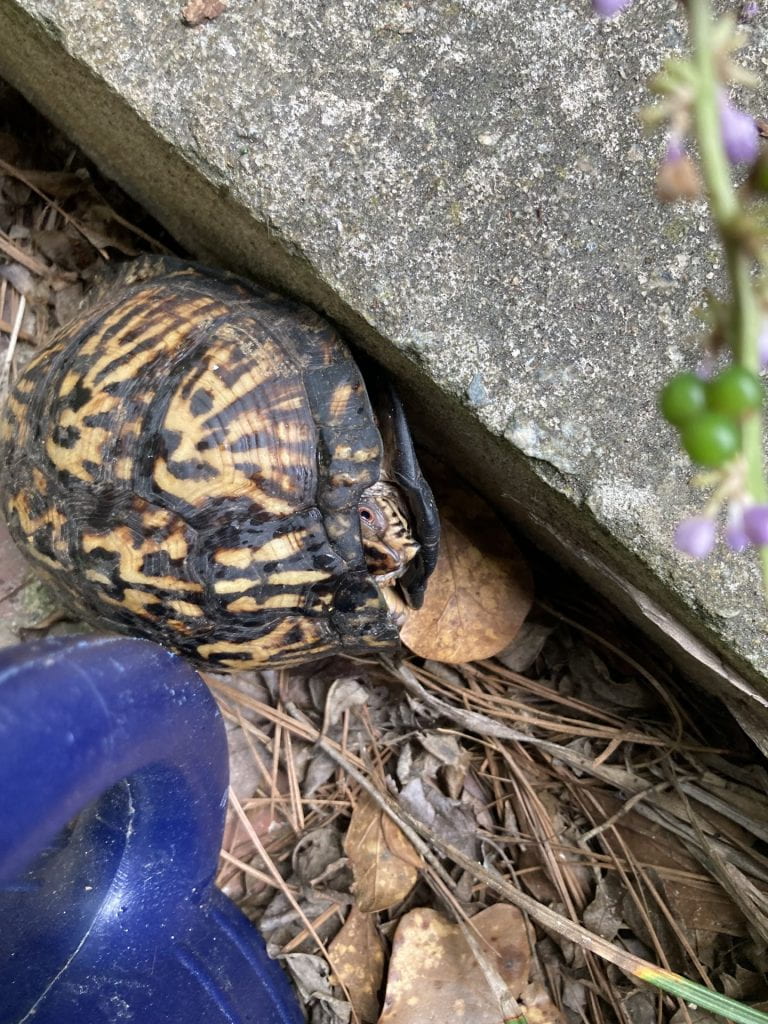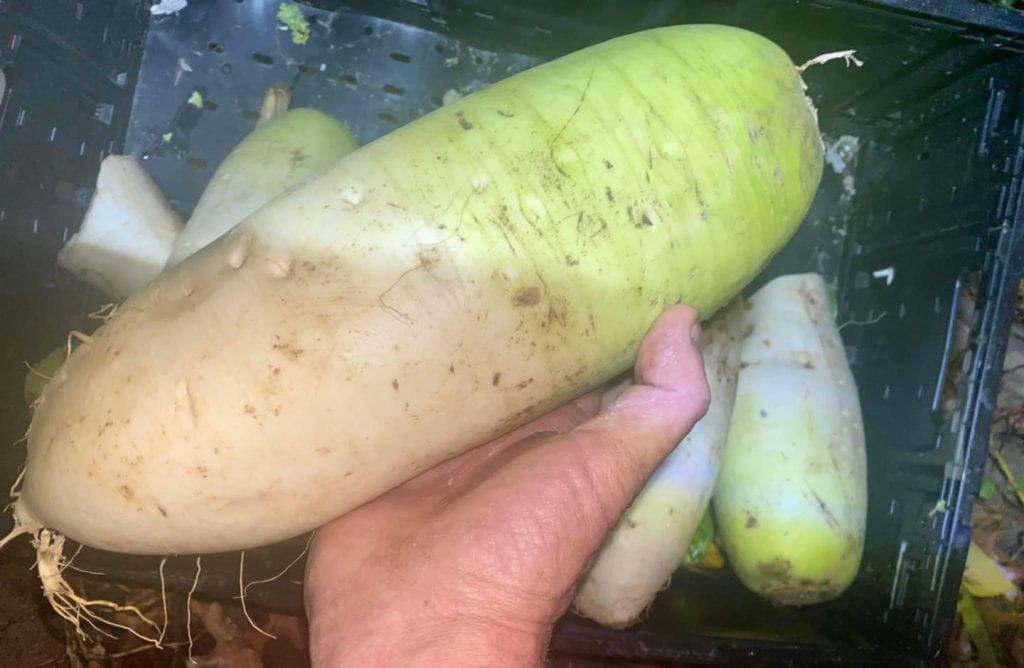Week one:
At our first garden club meeting we prepared a bed and planted kale. While we were working in the bed we had to pull out some of the okra plants and the two ground cherry plants. The kids tried fresh baby okra and a few of the ground cherries that were still good. What did they think about these vegetables? Watch the videos and you’ll see!


Week 2:
At our second garden club meeting we dug up all of the sweet potatoes we grew from the slips my friend Jason Roland had donated to the garden club. We ended up with 52 potatoes from only 3 slips! We also found a ladybug! We cleaned off the trellis in this bed where the yard long squash was growing over the summer and pulled out the basil too. Later Señor Frank planted kohlrabi and yellow cabbage-collards in this bed.
After we each got a turn to dig a shovelful of soil, Señor Frank took over turning the whole bed to help speed up the process…
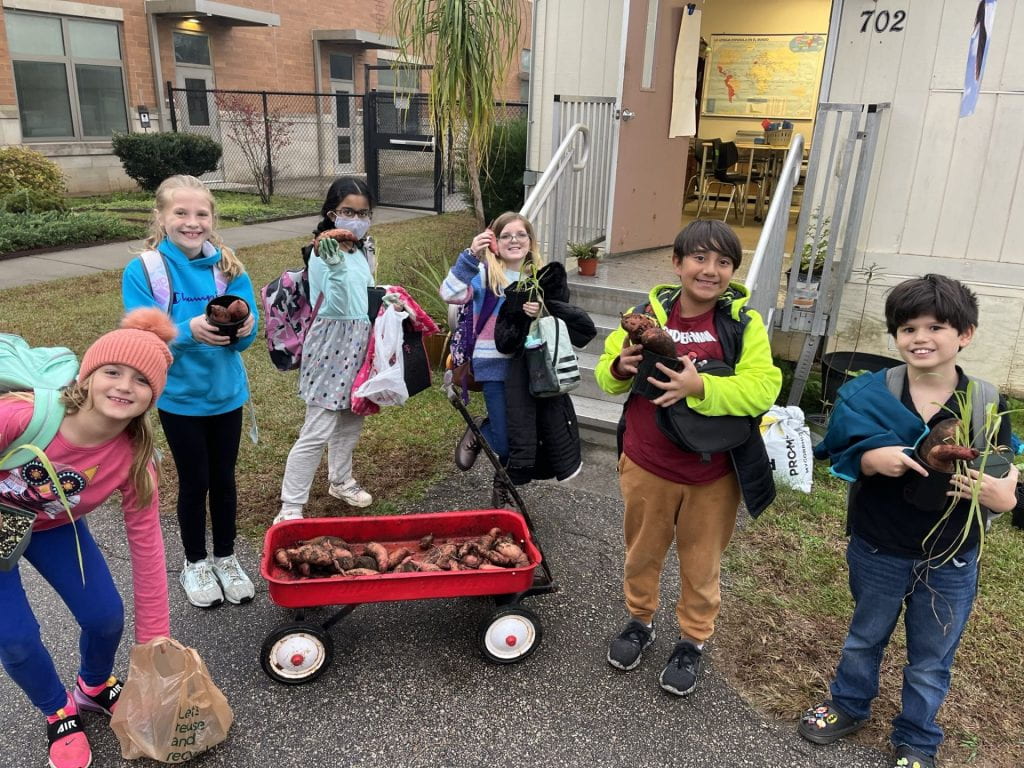

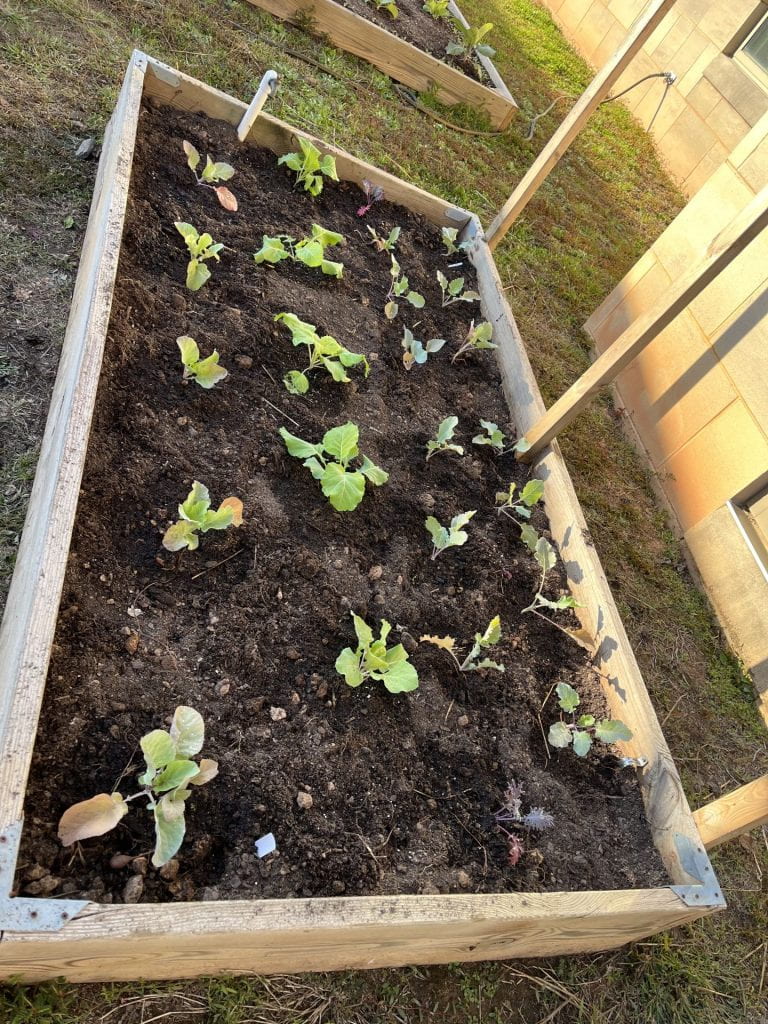
Week 3:
This week we went around to the beds on the other side of the school to start getting them weeded and ready to plant. We had strawberry plants that we got from Lina, a 4th grade student who sold them to Señor Frank. Señor Frank was happy to pay a Lena for her plants since it’s very hard to find strawberry plants this time of year and she said that her plants had been growing well in her yard since she planted them there last year. She actually said that she and her mom had planted them in a kiddie pool and that they spread so much that they had climbed out of the pool and were spreading into the lawn! Now those are the kind of strawberry plants we want!
This tool is used to establish garden beds using the “no-till” method. You insert the tines into the soil and rock the tool back and forth to crack up and loosen the subsoil, then add compost or other rich, organic soil on top of the area you just forked. This allows the organic material to sink into the cracks in the hard subsoil. If you pile up enough good soil on top of the area, you can plant directly into it. Over time, the roots of your plants in the bed will break up the harder subsoil more and earthworms will work through the hard soil dragging the rich organic topsoil deeper into the ground as they break it up. It can take a few years, but starting beds this way is healthier for the soil and let the worms do most of the work for you!
In our case we are just opening up the clay subsoil that is under our garden soul now that the cardboard that was laid on the grass years ago has decomposed completely. Breaking up the clay will help our plants get their roots deeper into the soil where there will still be moisture in the hot summer months. This will make our plants much more drought-tolerant so we won’t have to water as much.
We left a bit of space in front of the strawberries so we can plant some vegetables there this season. We also plan to plant garlic and shallots between the strawberry plants since garlic, shallots, and strawberries all like to have straw under them. The straw helps to keep the ground from freezing in the winter so our plants won’t freeze, and in the spring/early summer when the berries grow, it will help prevent weed growth and keep the berries off the ground so they don’t rot.
You might have noticed how much space there is between our strawberry plants. We space these plants far apart (about 16 – 18 inches) because they will eventually send out runners with baby plants on them that will take root far from the mother plant. After a year or two, this entire bed should be completely full of strawberry plants!
So you can see that the intercropping garlic and shallots trick will only work for a season or two…


